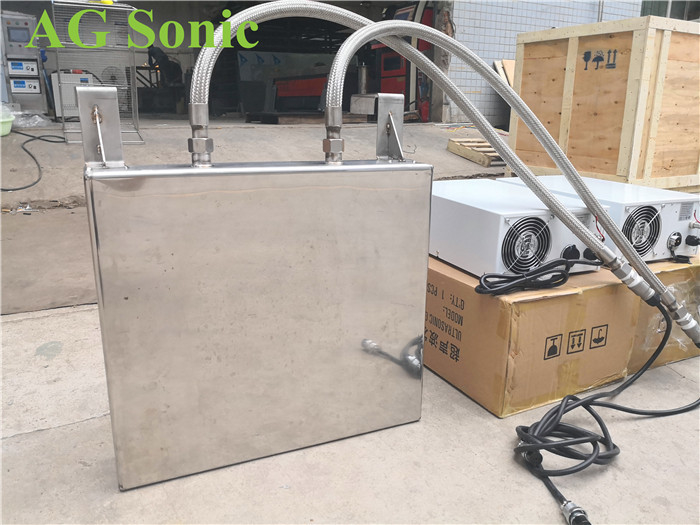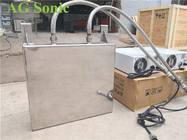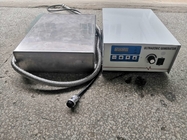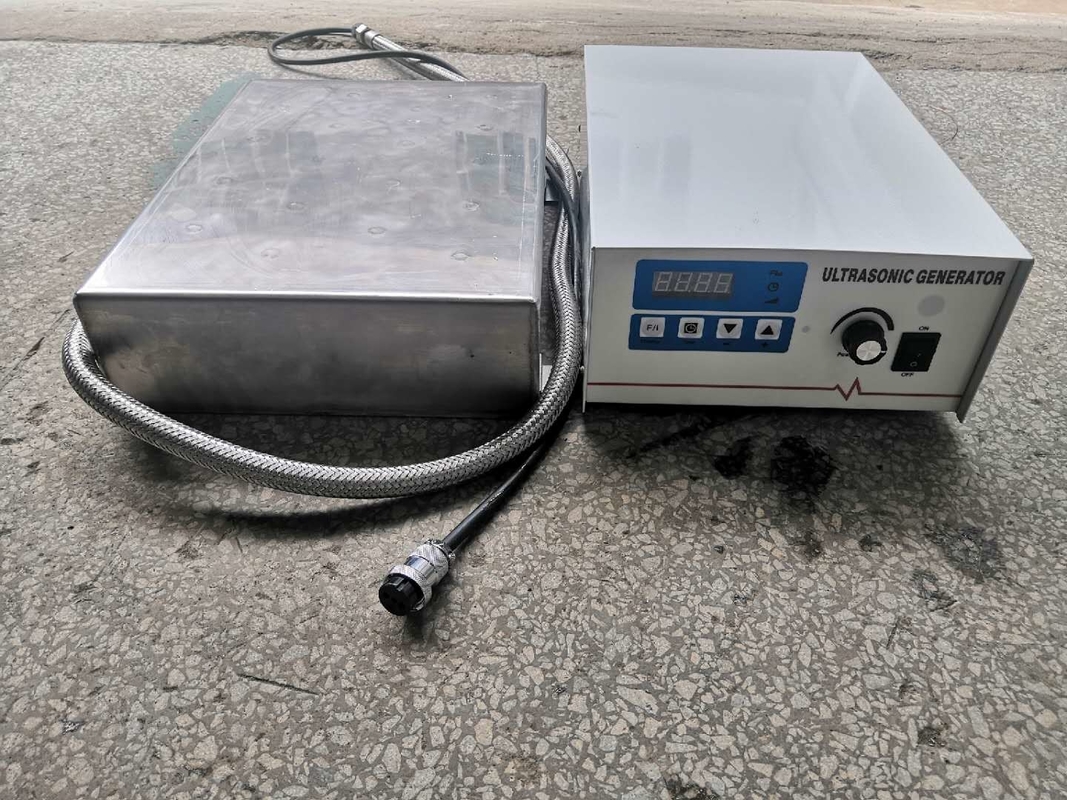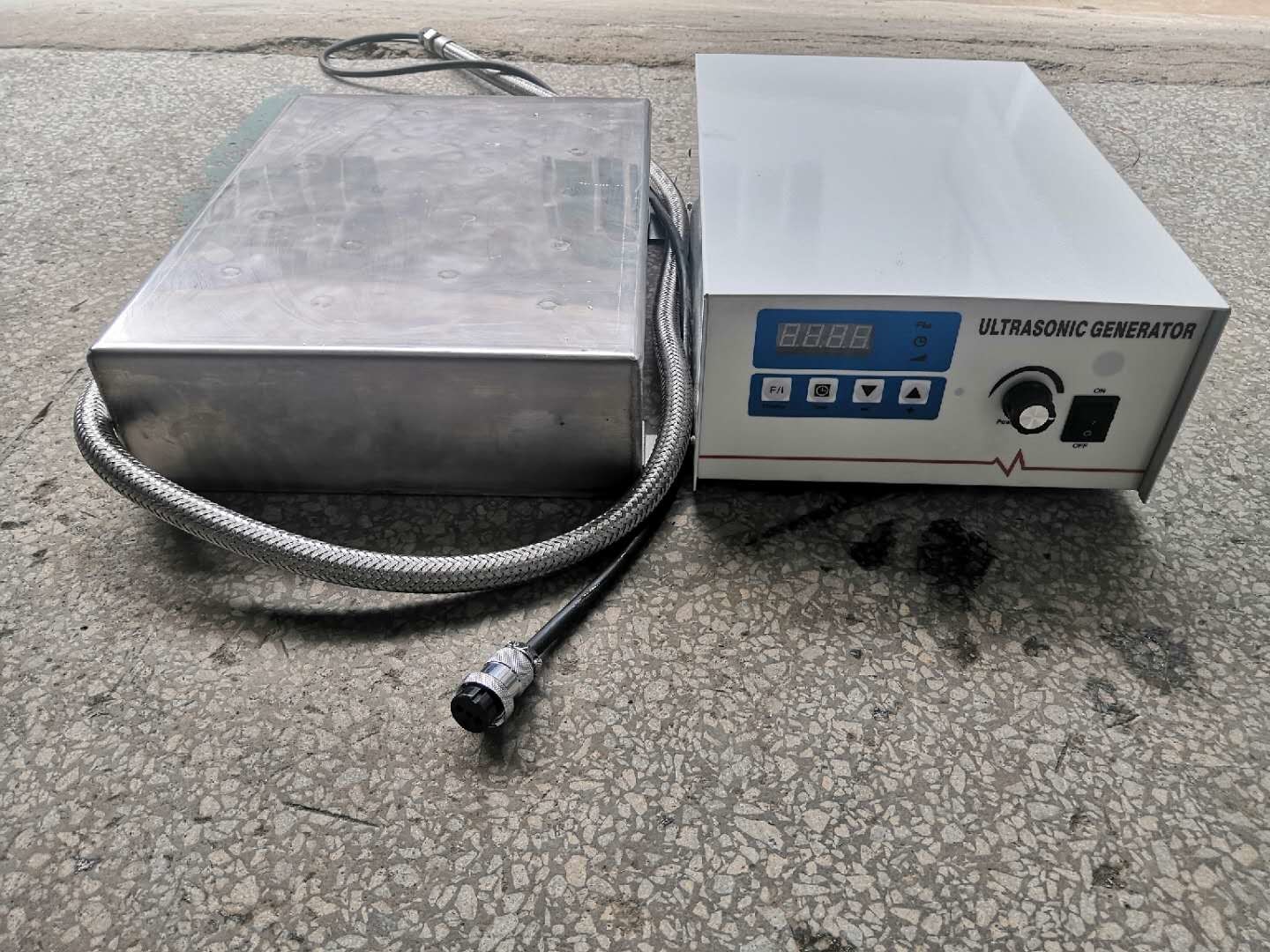Industrial Underwater Cleaning Machine Immersion Ultrasonic Cleaner
Benefits and features
Powerful Ultrasonic cleaning
Engineered for optimum results, Piezo-ceramic transducer elements produce a powerful ultrasonic effect for
most difficult of cleaning tasks.
Durable construction
Manufactured from high quality stainless steel, both internally and externally, the tanks are easy to maintain and keep clean.
Safe and user friendly
Tooling is simply placed into a basket and lowered in to the heated detergent,
setting of time and temperature and the operation of other features is made easy by simple front panel controls. Dry run heating protection and automatic switch off bring additional safety features
Immersible Transducer Generator How It Works?
Ultrasonic cleaning uses sound waves to create millions of small bubbles in a tank of cleaning solution. The parts to be cleaned are submerged in the solution and as the bubble are formed and “explode” they remove any dirt, grease, carbon etc. This method also works very well. The one disadvantage that I noticed with ultrasonic cleaning is that aluminum parts do not come out of the cleaning tank looking like new. They seem to have some discoloration to them even though they were clean. If you are going to paint the parts then this shouldn't matter.
Ultrasonic technology is powerful because:
a. Sound waves created by transducers are passed through the water creating vibrations that shake organic material loose from instru�ments
b. Microscopic bubbles succumb to pressure and implode, creating a stream of water, which when next to the surface of an instrument will push gross soils off
c. Hidden bioburden is removed from microscopic bubbles, created by the vibrations that when they encounter debris bump it free from the instrument
Ultrasonic maintenance
To ensure that your ultrasonic cleaner is working optimally it’s important to conduct routine maintenance on the unit. Ultrasonic cleaning equipment … be tested upon installation, weekly (preferably daily) during routine use, and after major repairs. Users have options for what methods they use to verify that the unit is functioning.
The foil test is a simple, yet tried-and-true method to check for ultrasonic activity in the tank. This test is conducted with a wire form covered by a piece of foil. After the system has been degassed, the form with foil is placed in the tank and the ultrasonic is started. If the foil comes out with a uniform pattern of indentations, then cavitation is present. If a different method is preferred, there are other products currently on the market that monitor ultrasonic activity within the tank. Some indicators out there are also considered dual-purpose, and act as a cleaning indicator that will also prove cavitation is present in the tank
The ultrasonic generator
The ultrasonic generator converts a standard electrical frequency of 60 Hz into the high frequencies required in ultrasonic transmission.
The ultrasonic frequency generator plays a key role in the overall performance of the system. Earlier generator designs developed a fixed frequency signal designed to operate at the resonant frequency of the transducer system. For example, if the design frequency of the transducer was 20 kHz, the generator developed exactly a 20 kHz signal. The problem with this design is that it tends to create hot spots and standing waves in the tank bath, providing uneven cleaning in different tank areas.
The development of sweep frequency generators eliminated these problems. In most any ultrasonic cleaning system, there are multiple transducers that make up the transducer system. Due to manufacturing tolerances, it is highly unlikely that each transducer will have exactly the same resonant frequency. With a fixed frequency generator, the transducers that are closest in resonant frequency will operate the most efficiently in their respective areas, creating an uneven cavitation pattern. By sweeping the frequency just slightly above and below the center frequency, all transducers see their resonant frequency at the rate of sweep and maximum efficiency occurs, eliminating hot spots. Sweep frequency also eliminates standing waves from occurring by repeatedly overlapping the wavelength.
Many ultrasonic generators also have “autofollow” circuitry. Autofollow circuitry is designed to maintain the center frequency when the ultrasonic tank is subject to varying load conditions. When parts are placed in the tank or when the water level changes, the load on the generator changes. With autofollow circuitry, the generator matches electrically with the mechanical load, providing optimum output at all times to the ultrasonic tank.
Ultrasonic Tank And Transducer Installation
Ultrasonic tanks are generally rectangular and can be manufactured in just about any size. Transducers are usually placed in the bottom or on the sides, or sometimes both when watt density (watts/gal) is a concern. The transducers can be welded directly into the tank, or watertight immersible units can be placed directly into the aqueous solution. In some instances, the immersibles may be mounted at the top of the tank facing down. For applications such as strip cleaning, one immersible is placed on the top and one on the bottom with minimal distance between them. The strip is then run through the very hard energy field. A tank should be sturdy in construction, ranging from 11-14 gauge in thickness. Larger, heavy-duty industrial tanks should be 11-12 gauge and should contain the proper stiffeners for support due to the weight of the solution.
Our immersible transducer is custom designed for your particular application and tank size. It can be incorporated into existing tanks of any size and converted it into ultrasonic tank. It is controlled by our unique Pulse Swept Pleasecontact us for specific information on how we can create one for your Immersible Transducer needs.
The range of immersible transducers come in various sizes ultrasonic powers and operating frequencies. We can select the size you need based upon your cleaning requirements and tank size. The immersible ultrasonic transducer systems are portable and can be moved from one tank to another if required. They are most suited to when you have already a tank installed in your production process or we can supply the complete system including the tank.
Specifications:
| Model |
Material |
Transducers |
Estimated volume |
Box size |
Cable
lead-out |
Ultrasonic frequency |
Ultrasonic power |
| (mm) |
(pcs) |
(L) |
(mm) |
|
(kHz) |
(W) |
| TZ-1003 |
SUS304/SUS316L |
3 |
15 |
250x150x100 |
Rigid tube/
Flexible tube |
28/40 |
150 |
| TZ-1006 |
6 |
30 |
305x250x100 |
300 |
| TZ-1012 |
12 |
60 |
355x250x100 |
600 |
| TZ-1018 |
18 |
90 |
406x305x100 |
900 |
| TZ-1024 |
24 |
120 |
500x355x100 |
1200 |
| TZ-1030 |
30 |
150 |
550x406x100 |
1500 |
| TZ-1036 |
36 |
180 |
500x460x100 |
1800 |


 Your message must be between 20-3,000 characters!
Your message must be between 20-3,000 characters! Please check your E-mail!
Please check your E-mail!  Your message must be between 20-3,000 characters!
Your message must be between 20-3,000 characters! Please check your E-mail!
Please check your E-mail! 
